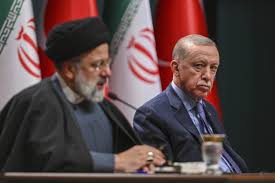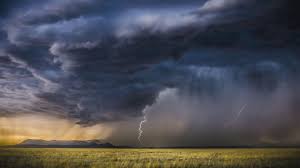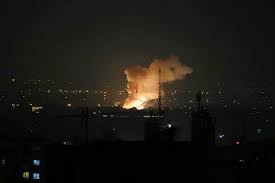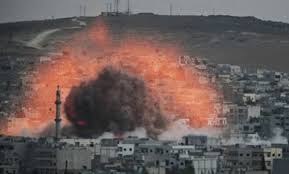After the Strikes: Iran's Nuclear Future and the Perilous Quest for Regional Dominance

After the Strikes: Iran's Nuclear Future and the Perilous Quest for Regional Dominance
Introduction
In the wake of recent strikes between Iran and Israel, the strategic calculus of the Middle East is shifting rapidly. While the immediate military confrontation has subsided, a deeper and far more complex battle looms — one centered on Iran’s nuclear ambitions and its broader pursuit of regional hegemony. The fallout is not only geopolitical but also existential, as nations grapple with the implications of a potential nuclear-armed Iran in an already unstable region.
1. The Immediate Fallout: A Fragile Ceasefire
The recent exchange of military strikes, which saw precision attacks on Iranian military installations and retaliatory ballistic launches into Israeli territory, has temporarily paused — but not resolved — hostilities. Despite international pressure and calls for de-escalation, both Tehran and Tel Aviv have left open the door to future conflict, especially as strategic red lines remain blurred.
- Key implications: Damaged military infrastructure, disrupted regional logistics, and intensified cyber warfare.
- International response: UN-backed calls for restraint; EU and Gulf states pushing for multilateral security talks.
2. Iran’s Nuclear Program: Accelerated or Deterred?
Rather than deterring Iran, the strikes appear to have hardened Tehran’s resolve. Iranian officials claim their nuclear program remains peaceful, yet recent IAEA reports suggest enrichment levels nearing weapons-grade. With the 2015 JCPOA effectively defunct and inspections limited, fears are mounting that Iran could achieve breakout capability within months.
- Current status: Uranium enrichment surpassing 60%; advanced centrifuge deployment at Natanz and Fordow.
- Strategic ambiguity: Iran denies weaponization but refuses to allow full transparency.
- Western dilemma: Military intervention risks regional war; diplomacy is hampered by mistrust.
3. The Broader Strategy: Iran’s Pursuit of Regional Supremacy
Iran’s nuclear trajectory cannot be viewed in isolation. It forms part of a wider strategy to assert dominance through a combination of:
- Proxy networks (Hezbollah, Houthis, PMF in Iraq)
- Strategic alliances with Syria, Lebanon, and non-state actors
- Economic corridors via the Persian Gulf and Central Asia
Tehran seeks not just deterrence but influence — to position itself as the central power broker across the Levant, the Gulf, and beyond. This ambition is now viewed by rival Gulf monarchies and Israel as an existential threat.
4. Israel’s Red Line: The Doctrine of Preemption
For Israel, a nuclear-capable Iran crosses a strategic red line. The Netanyahu administration has repeatedly stated that it will not allow Iran to acquire nuclear weapons — a policy that includes covert sabotage, cyber attacks (e.g., Stuxnet), and targeted assassinations of nuclear scientists.
- IDF capabilities: Expanded airstrike range, deep-penetration munitions, and real-time satellite surveillance.
- Doctrine shift: From reactive to proactive — aiming to delay or destroy nuclear capabilities before full development.
5. Regional Implications: An Arms Race on the Horizon
If Iran crosses the nuclear threshold, a domino effect is likely:
- Saudi Arabia may revive dormant nuclear cooperation agreements with Pakistan and China.
- Turkey and Egypt may reassess their strategic posture.
- UAE and Qatar could seek deeper Western security guarantees or dual-use technologies.
The result: a volatile regional arms race that erodes global nonproliferation norms.
6. Global Stakes: Beyond the Middle East
The Iran-Israel conflict is not contained. Its implications are global:
- Energy security: Oil market volatility due to threats in the Strait of Hormuz.
- Non-proliferation treaty (NPT) credibility: Undermined by potential nuclearization outside legal frameworks.
- Great power dynamics: The U.S., Russia, and China are recalibrating positions as influence in the region becomes more contested.
Conclusion: A Perilous Crossroads
The aftermath of the Iran-Israel strikes leaves the region teetering between fragile calm and catastrophic escalation. Iran's nuclear ambitions now represent both a national security challenge and a symbol of its quest for dominance. The world stands at a perilous crossroads — one that demands urgent diplomatic innovation, credible deterrence strategies, and a renewed commitment to long-term regional stability.
League Manager Editorial Team








Leave a Comment